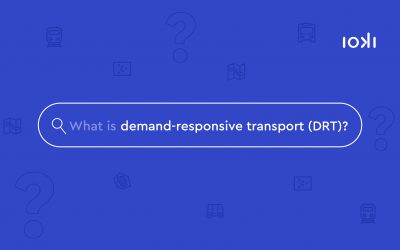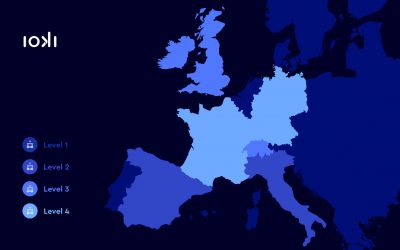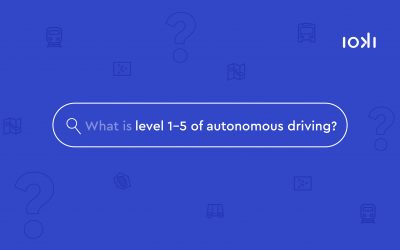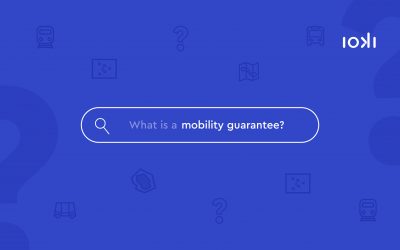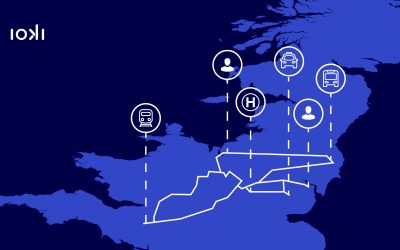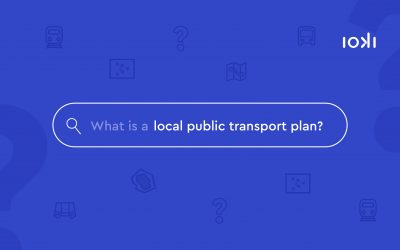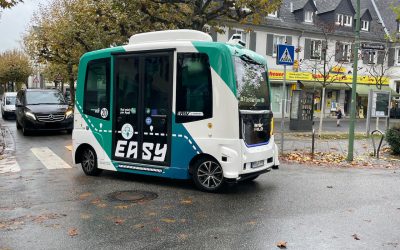Demand-responsive Transport (DRT) refers to a technology-based and shared mobility service. Instead of following predefined routes, timetables and fixed stops, on-demand services follow no timetable, also make virtual stops and operate on different routes. The vehicles operate on demand and when needed. Booking is usually done via app but can also be done via phone call and/or in the web browser. DRT combines the reliability of conventional public transport with the flexible availability of private cars.
Mobility Turn, now! Mobility of the Future in Hamburg
This time we’re off to the far north, or more precisely to the Hanseatic City of Hamburg. The port metropolis on the Elbe is a pioneer in Germany for digital, climate-friendly and flexible mobility.
Mobility on holiday – first & last mile in tourist regions
Holidays without mobility are only possible on staycations, because no matter whether it’s a day trip, an annual holiday or a long-term trip: Travelling means being mobile. In order to achieve the climate protection goals and to advance the traffic turnaround, tourist traffic should also be critically examined, because Germans like to travel a lot.
Autonomous vehicles: turning point in European regional and local transport
Autonomous mobility is no longer a utopia; it is already reality and a key technology in today’s world. Worldwide, and especially in Europe, research and testing are being carried out on autonomous mobility – this holds great potential in terms of improving individual mobility thanks to increasingly efficient services while also providing a way of reducing private transport.
What is … level 1-5 of autonomous driving?
Autonomous driving has been considered one of the major trends in the mobility industry for years. According to a representative survey conducted by the digital association Bitkom in 2021, 99.8 percent of respondents can imagine using an autonomous means of transport*. But what does it actually mean when car manufacturers send the first systems for highly automated driving on the road at level 3 and level 4 autonomous shuttles reinforce public transport in Germany on demand from 2023 onwards?
Corporate Mobility in 2023: flexible solutions instead of classic company transport or company cars
For a long time, the company car was considered the non-plus-ultra and was often the only mobility offer employees could expect from their employer. In 2023, more flexible mobility solutions such as digital demand-responsive company transport, job bikes and mobility budgets are gaining ground. Rising energy prices, stricter environmental and climate protection regulations as well as greater sustainability awareness among employees are also contributing to the need for companies to rethink their corporate mobility management.
What is… a mobility guarantee?
A mobility guarantee is
Planning mobility for rural areas: What about public transport in England, Wales and Scotland?
55 million German citizens living in suburban and rural areas do not have access to attractive public transport offerings. This was the result of our mobility analysis of public transport in Ger-many. But what about public transport in England, Wales and Scotland? Our transport planners investigated this question. Around 450,000 weekday trips from timetables of over 300,000 stops in England, Wales and Scotland were analysed. The result: in all three parts of the country (except London), less than 20 per cent of the population have access to attractive public transport.
Mobility Turn, now! Mobility of the Future in Baden-Wuerttemberg
In the previous edition of “Mobility Turn, now!” we looked at the measures taken by the state of Hesse to enable citizens to travel in a climate-friendly way by local transport. This time we are taking a closer look at Baden-Wuerttemberg.
What is… a local public transport plan?
A local public transport plan is a planning instrument in which all performance and quality criteria for the operation of local public transport in an area are acquired. The local transport plan analyses the existing mobility offer and serves as a guideline for the future development of local mobility.
Easy through the Mobility Turn: Autonomous On-Demand Traffic in the Rhine-Main Region
The mobility turn cannot be achieved without digital and forward-looking mobility offers. The goal “more mobility with less traffic” can only be realized by the merging of different digital technologies. One key element in this effort can be autonomous vehicles on demand.
Mobility Turn, now! Mobility of the Future in Hessen
65 million tons less CO2 emissions till 2030 – this is the climate goal for the German transportation industry. More electric mobility, a modernized rail network and billions for the development of public transport are supposed to contribute to the effort of Germany becoming more climate friendly.
But which measures are being taken on a federal level to enable citizens to be sustainably mobile with less ecologically harmful traffic? What progress is being made in the efforts to expand public transport, to reactivate old train tracks and to install new bike lanes? We answer these and other questions in our new blog series “Mobility turn, now!”. We want to show pioneering mobility projects in each federal state as an example for a successful and sustainable mobility turn in Germany.
Newest article

What will the future of the mobility ecosystem look like? IAA 2025, Zeit Konferenz Neue Mobilität, Zukunft Nahverkehr
Last week, Munich was the hub of the mobility world, hosting several mobility events such as IAA Mobility, the Zeit Conference “New Mobility” and Zukunft Nahverkehr as an open space on Königsplatz – the Bavarian capital became the scene of intensive discussions about the mobility of tomorrow. We were right in the thick of things, gaining an understanding of what is driving mobility

